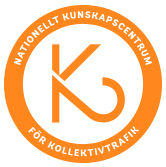Geographic forecasting of crime can be done by considering prior crime or by considering spatial risk factors, e.g., using risk terrain modeling (RTM). The present paper tests both methods, but primarily focuses on RTM and on increasing our understanding of forecasting by attempting to compare the spatial risk factors for where the number of crimes is high with the spatial risk factors for where the risk of victimization is high. This is performed by fitting negative binomial models on crime around bus stops and comparing them to the same models with the number of bus passengers as exposure variable. The models also take the surrounding environment into account by fitting multi-level models with neighborhood level predictors of concentrated disadvantage and collective efficacy. The results show that some types of facilities are risk factors for crime, but not for victimization. This results in new insights into how flows of people impact on forecasting, as for instance a school is a spatial risk factor for crime, while not being associated with an elevated risk per person. The results also show that the neighborhood level of collective efficacy is a stable and significant risk factor both for crime and for risk of victimization, highlighting a potential for better crime forecasting by combining different spatial and theoretical perspectives.
The aim of this paper is thus to add to the crime forecasting literature by considering differences between risk factors for crime and risk factors for crime per population at risk. The paper uses the methodological concept of risk terrain modeling (RTM), but for forecasting purposes the findings should be relevant more generally.
